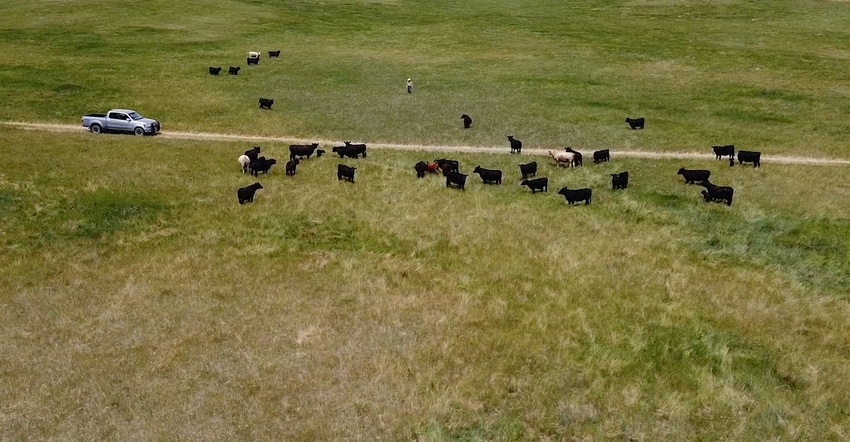July 30, 2021

Editor’s note: This is the final of seven stories on the relationship between landowners and tenants, and how soil health goals can be achieved more efficiently if both parties are on the same page.
“I needed pasture. He had it for lease. We talked about how we would manage it in a way that created healthy rangeland, and it’s been working well for 14 years now,” says Dan Rasmussen of the grassland sublease arrangement he has with Duane Mednansky.
Mednansky is a member of the Rosebud Tribe in Mellette County, S.D. “He leases the land from the tribe, and I sublease from Duane," Rasmussen says.
“We have 35 pastures, and almost all our cattle are rotated throughout the year — 12 months out of the year — and Duane’s pasture is included in that rotation as if it were part of our ranch,” Rasmussen says.
“Our conversation was how do we make these pastures more productive? First, we controlled the prairie dogs. Second, we did some cross fencing, and third we included these pastures in our ranch rotation,” Rasmussen says. “Those three things have really helped bring the diversity into the pastures and improve the soil quality. The way we look at it is we want to treat this leased land just the same way we treat our other ranch land. Our goal on all of it is to have healthy soil and healthy rangeland.”
The pair have increased the stocking rate, which brings more money in for the tribe, and additional birds are on the land.
“The tribe’s got a certain grazing program that we’ve got to follow, and this is above and beyond what the tribe requires us to do,” Mednansky says. “It’s been cost effective; it’s paid off in the long run. I like that every fall you can’t even tell that we had cattle in there — there’s a lot more wildlife, a lot more birds for more bird hunting.”
Easy to see
Mednansky’s family has noticed. “Our family’s been running our cattle with other people’s cattle on our range units since the middle ’80s,” says brother Richard. “Dan and Duane, they take pride in what they do on their piece of the reservation, and our family tries to do the same. They’ve increased the production on their range unit, and there are more birds there. That I can tell you because I’m a hunting guide and hunt that pasture, and I’ve never had to go anywhere else to find grouse.”
“How much grass do we leave to create a healthy soil and how much do we take? That’s the discussion that should be ongoing,” Rasmussen says. “There are a lot of benefits to finding that sweet spot where you’re leaving enough grass to keep the pasture healthy, yet you’re generating enough income from that pasture to keep going and be sustainable.”
“What I would tell tenants who want to have a land conservation discussion with the landowner they’re leasing from is that the longer term the lease arrangement, the better, and everybody wins if the soil is healthy,” Rasmussen says. “I want to have healthy rangeland with a diversity in native plants for better health and gain in our livestock. Our cattle do better with diversity of plants that are palatable all through the summer. From the standpoint of the landowner, the land becomes more productive.”
Mednansky adds, “A good conversation to have is how can we both be happy.”
Betts writes from Johnston, Iowa.
About the Author(s)
You May Also Like




